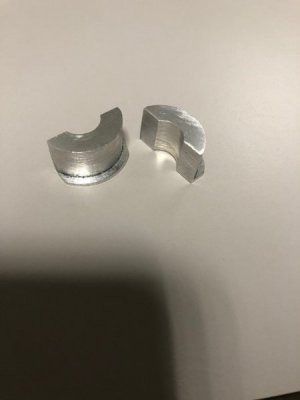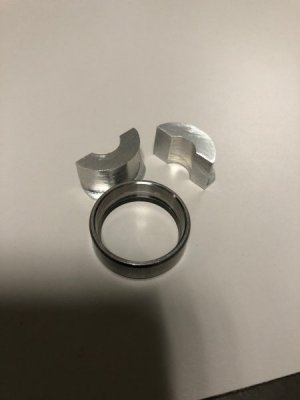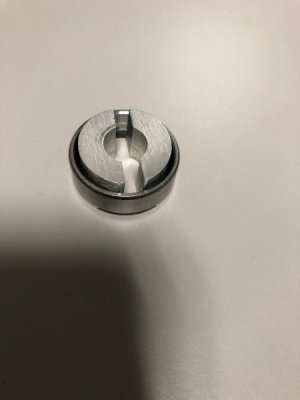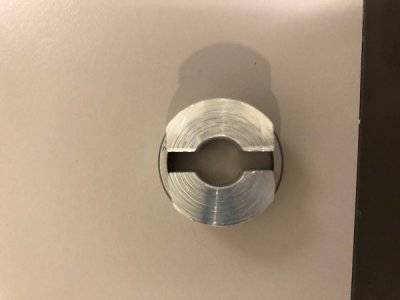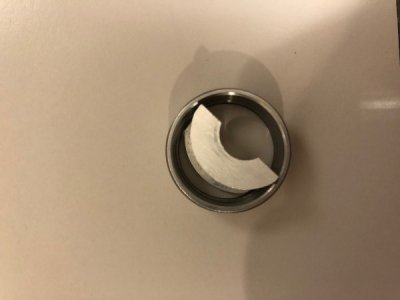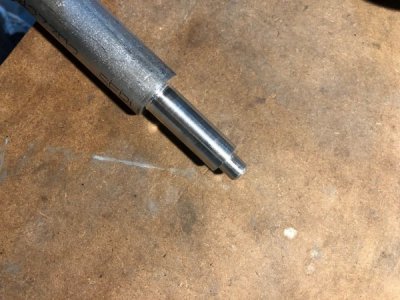- Joined
- Dec 20, 2012
- Messages
- 9,422
I totally agree with you - burying the nose radius is the best way to minimize radial forces for a consistent cut. I do not know of a source for CCGT inserts that fit a 1/2" bar with tiny nose radii. That is why I suggested contacting one of the insert makers; they may have some we don't know about.
If you choose to go with a carbide bar at some point, watch ebay for a Circle Machine QCMI bar. It takes flat-topped boring, grooving and threading inserts. These bars are really versatile and very accurate. You will also find that a flat insert will take a much finer cut than one with a chipbreaker. With the right speed and feed, they produce coiled chips instead of long strings, even in aluminum. I totally gave up on SCLCR bars a long time ago; they cut but not nearly as well as a Circle bar does. Moreover, Circle tends to make insert with smaller nose radii and that really helps at these tolerance levels.
Good luck with this project and let us know how you make out.
If you choose to go with a carbide bar at some point, watch ebay for a Circle Machine QCMI bar. It takes flat-topped boring, grooving and threading inserts. These bars are really versatile and very accurate. You will also find that a flat insert will take a much finer cut than one with a chipbreaker. With the right speed and feed, they produce coiled chips instead of long strings, even in aluminum. I totally gave up on SCLCR bars a long time ago; they cut but not nearly as well as a Circle bar does. Moreover, Circle tends to make insert with smaller nose radii and that really helps at these tolerance levels.
Good luck with this project and let us know how you make out.


